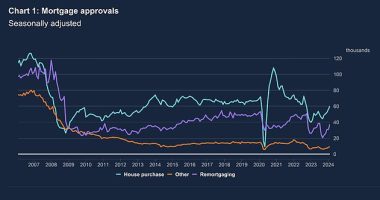
In recent years, best-buy savings tables have been dominated by banks and building societies unfamiliar to many.
Now another new name — StreamBank — has launched a top one-year, fixed-rate savings account, paying 3.5 per cent.
But before taking the plunge with any new kid on the block, it’s vital to do your homework first. Here’s what to check for.


Research: Before you take the plunge with a savings name you have never heard of it, it’s important to do your homework
Ensure your money is protected
This is where to start. Your savings should be covered under the Financial Services Compensation Scheme (FSCS).
This protects balances up to £85,000 — or £170,000 on joint accounts — if a provider fails. Avoid any provider without this safety net.
The compensation limit covers your money with a financial institution — if you already have money with the same group, it counts towards the total, so make sure you don’t bust this limit.
StreamBank is registered. Find the register at fscs.org. uk/check/check-your-money- is-protected
Reviews paint a picture
Check reviews of banks on Google, Trustpilot and Feefo. The newest might not have many reviews to start with. And be aware, some sites allow firms to pay to remove bad reviews.
Remember, also, that people are more likely to post if they have a negative experience than when they have a good one.
Telephone number and response time
If it is important for you to telephone to check the status of your account, withdraw cash and undertake other tasks, call a provider’s savings line.
This will give an indication of wait times and how good staff are. Check whether the number is free to call — if not, your phone bill could eat into your interest.


Customer service: Giving the provider’s dedicated savings number of a call will give a good indication of waiting times and how good the staff are
How quick are withdrawals?
If quick access to your cash in an emergency is important, check how fast money is paid into a nominated account.
Many banks say it takes no more than two hours on an easy-access account. Others say it’s a next-day service.
Getting money from fixed-rate deals can be slower. And at National Savings & Investments, cashing in Premium Bonds can take days.
Online access can be hard work
Some smaller savings providers have clunky websites.
Kevin Mountford, co-founder of savings platform Raisin, advises looking at reviews and visiting a provider’s website to see how well it functions.
He says: ‘Savers are increasingly demanding user-friendly application processes. Yet some providers still struggle to offer this via laptops and mobiles. My message is, do your homework.’
Check how your money is invested
Most savings providers will give an idea as to how your money is invested to fund your returns.
Typically, this is via small business, personal or property lending. StreamBank, for example, is using some of savers’ cash to lend on commercial buildings.


Holding: Most savings providers will give an idea as to how your money is invested to fund your returns
Watch out for ‘expected profit’
A handful of the top rates are offered by Islamic banks, such as Al Rayan and Gatehouse.
They pay ‘expected profit’ to savers rather than interest, which means it is not guaranteed.
The accounts invest in ethical, Sharia-compliant activities to make the profit. Both banks are FSCS-protected.
If it’s too good to be true…
Scammers target savers with legitimate-looking accounts.
Tell-tale signs of these include rates that are higher than elsewhere; dodgy adverts on social media and pressure tactics from people over the telephone.
City regulator the Financial Conduct Authority warns criminals can use the names of legitimate firms to defraud. For warnings of cloned firms visit: register.fca.org.uk/s/
Stick to banks on Money Mail’s best-buy savings tables, see above, hand-picked by our savings expert Sylvia Morris. Find a more detailed version at thisismoney.co.uk/save.








